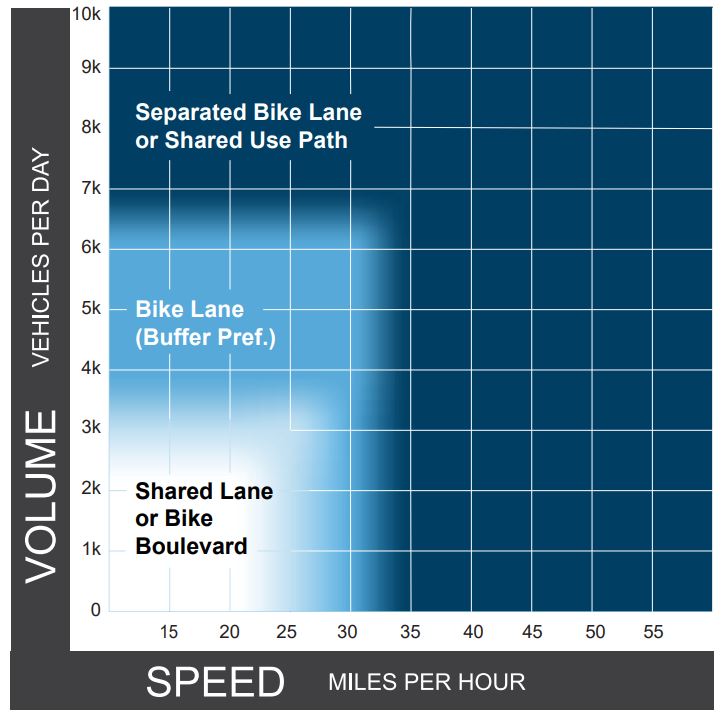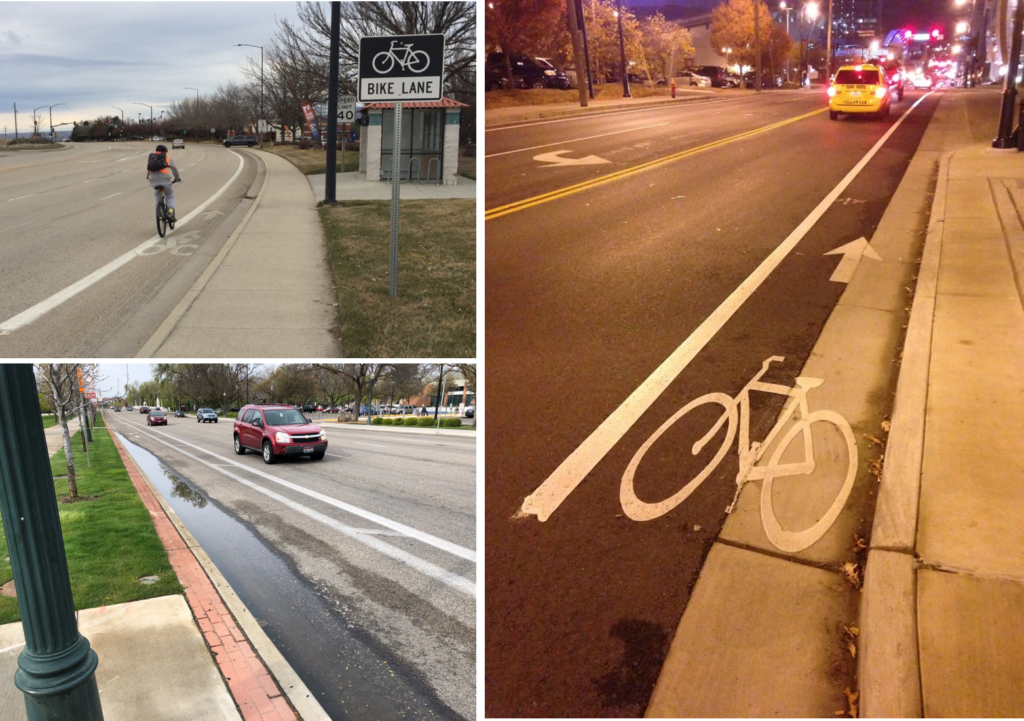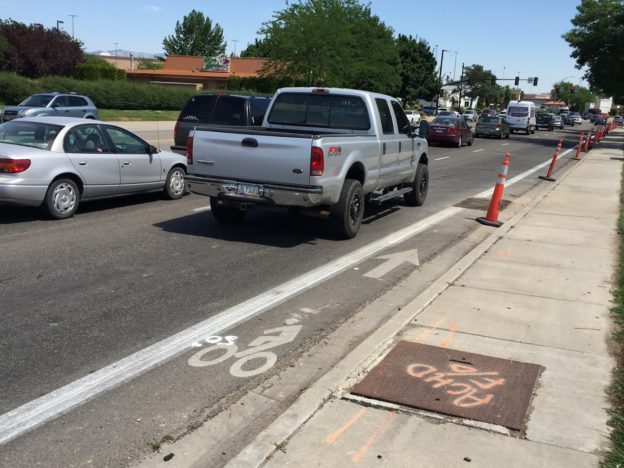By Don Kostelec
July 7, 2020
The 2019 release of the Bikeway Selection Guide by Federal Highway Administration’s Office of Safety should have ushered in a new engineering paradigm for bicyclist infrastructure. It deemed many of the nation’s existing bike lanes functionally obsolete.
If you work in transportation planning or design, you know the term functionally obsolete as one used to classify bridges.
Texas DOT describes it best: “Functionally Obsolete Bridge (FO) – A bridge that is unable to serve current traffic because of inadequate bridge width, load carrying capacity, vertical or horizontal clearances, or alignment between bridge and approach roadway.”
As with bike lanes, design studies are continually defining new ways to build safer bridges. Agencies like Texas DOT have diligently updated their own documents to ensure any new bridges meet these current standards as they emerge. Any bridges that do not meet those standards are considered functionally obsolete.
If a bridge was built in 1930 with 10-foot wide travel lane adjacent to a bridge railing without a shoulder between the two, then that bridge would be deemed functionally obsolete and become a candidate for replacement to bring it up to “current standards.”
Functional obsolescence is a factor used to give a bridge a “sufficiency rating,” which is based on scale of 0 to 100. That rating includes other factors and functional obsolescence does not immediately trip a need to replace a bridge. It may simply mean that if it’s rebuilt, then it should be engineered with features that make it as safe as possible given current guidance.
Functionally Obsolete Bike Lanes
That same approach is all we ask for from engineers when it comes to bicyclist infrastructure. If an agency’s current street cross sections are functionally obsolete based on the latest publication from FHWA’s Office of Safety, then why continue to engineer infrastructure that’s counter to those findings?
Functional obsolescence for bike lanes is easily defined using the Preferred Bikeway Type matrix on page 23 (Figure 9) of the Bikeway Selection Guide. That matrix, shown below, identifies motor vehicle traffic volume and speed thresholds that should be used to determine the safest design for bicyclists. It’s an easy-to-use tool that indicates any roadway with current or projected volumes greater than 6,500 vehicles per day and speed limits greater than 30 mph necessitates a separated bike lane or shared use path.

The guide notes, “Because the design user is the Interested but Concerned cyclist, the most appropriate recommendation may be a more protective facility than necessary for a Highly Confident or Somewhat Confident design user.” Therefore, the “fuzzy” areas of the matrix should always lead to a decision that results in the most protected facility.
If you have a typical in-street bike lane on a roadway with more than 6,500 vehicles per day and a posted speed limit greater than 30 mph, then it should be deemed functionally obsolete by the agency that manages that route. Call it that when you provide public comments at a project meeting. Call it that if you sit on bicycle advisory committees for public agencies. Call it that when you take a picture of bike lanes on harrowing multi-lane arterials.
There are other ways bike lanes can be classified as functionally obsolete (or F.O., as TxDOT wants us to tell them):
- Narrower than a bike’s handlebars = F.O.!
- Straddles the seam of the gutter pan = F.O.!
- In the door zone = F.O.!
- Ponding water = F.O.!
- Dangerous stormwater grate = F.O.!
- Engineers used shrinky dinks to fit a bike lane icon into the lane = F.O.!
In other words, there are many ways to tell your highway department to FO! Be creative.

The Double Standard
From 2002 to 2008, I worked at an agency in Boise called Ada County Highway District (ACHD). ACHD manages all the streets in the county, even within cities.
We had a colorful and determined Engineering Director who was a bridge guy. I mean, he was a bridge guy’s bridge guy. He could tell you anything you wanted to know about bridges and, thanks to his leadership, ACHD’s bridges were some of the best in the country.
I recall being in a meeting of department managers when it was revealed that there was a new study suggesting bridge railing heights should be 6 inches higher than we were building them. The request from the Engineering Manager was to issue a change order for every bridge currently under design to meet these new guidelines. It was done. No questions asked. Safety was paramount, right?
Has anyone issued a change order to design since FHWA’s Bikeway Selection Guide was published? I haven’t heard of one. It reveals the double standard in highway engineering safety practices.
All we are asking for in the bicycling world is equal treatment when it comes to safety and engineering practices.
Yet, there are hundreds of miles of brand new bike lanes under design right now that will be functionally obsolete when they open. You can probably identify them from your local and state agencies. Tell them to F.O.!

